Stranger Things 2 Episode 1 does something incredibly difficult, and it does it well: it’s a textbook example of how to kick off a new season of a beloved show.
In fact, if you write episodic TV, you should study this episode to see how to do it right. (You should also read my breakdown of the problems with Marvel’s The Defenders to see how not to do it. But I digress…)
However, before I explain why Stranger Things 2 Episode 1 works so well, I should qualify my opinion.
See, I wasn’t a very big fan of the first season of Stranger Things.
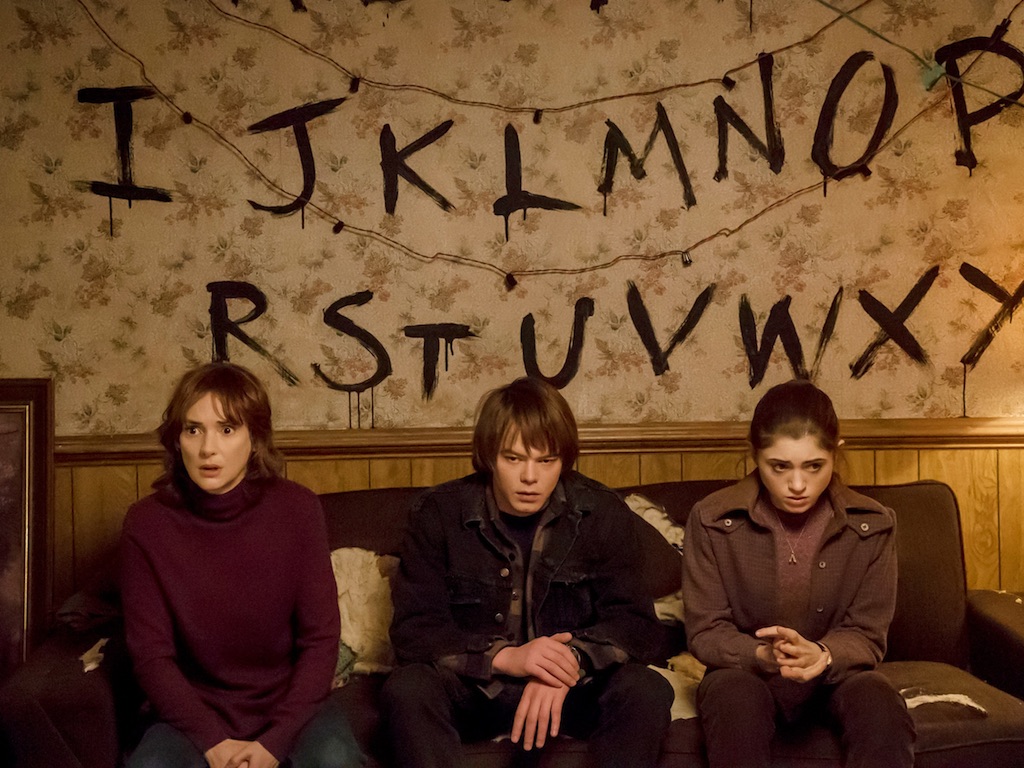
Seriously, how did Joyce not get fired during all this?
Yeah, I know. I’m a rarity. But I had my reasons.
For one thing, I didn’t watch it until months after it came out, so its hype was impossible to live up to. But that was my own problem.
For another, I thought the writing was a little obvious and the acting was a bit stiff. I liked the concept, the characters, and the ’80s homage, but I just couldn’t get past some of the flaws. I was rooting for it, but nostalgia alone wasn’t enough to keep me hooked.
However, I did think the first season did a good job of paying off its final episode.
The pacing was tighter, the acting was solid, and its multiple storylines dovetailed into a pseudo-ending that was thematically appropriate. It stuck the landing in a way that almost made up for some of my frustrations with the series as a whole. (Plus, there’s the iconic moment with Steve and the baseball bat.)
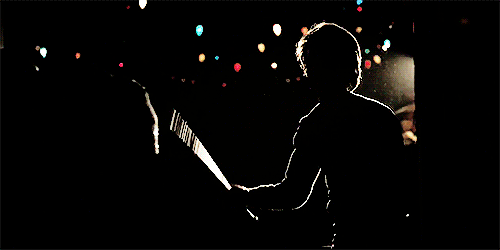
Then I watched the “Thriller” trailer for Stranger Things 2 and… I was surprised.
I actually got excited about what the next chapter of this story might accomplish.
This season already looked like more confident filmmaking just from the trailer alone. I figured the Duffer Brothers must have learned a lot from their season one experiment. Maybe season two… er, sorry, “the sequel”… would succeed where the original sometimes fell short.
What I wasn’t expecting was to write this post explaining why Stranger Things 2 Episode 1 is one of the best television episodes of the year. But here we are.
So, here’s why it works so well.
******** WARNING: Spoilers ahead for Stranger Things 2 Episode 1 “MADMAX”. (ALSO: I’ve only seen the first 3 episodes of this season as I type this, so I may revise this post once I see all 9.)
Why Stranger Things 2 Episode 1 Is Near-Perfect
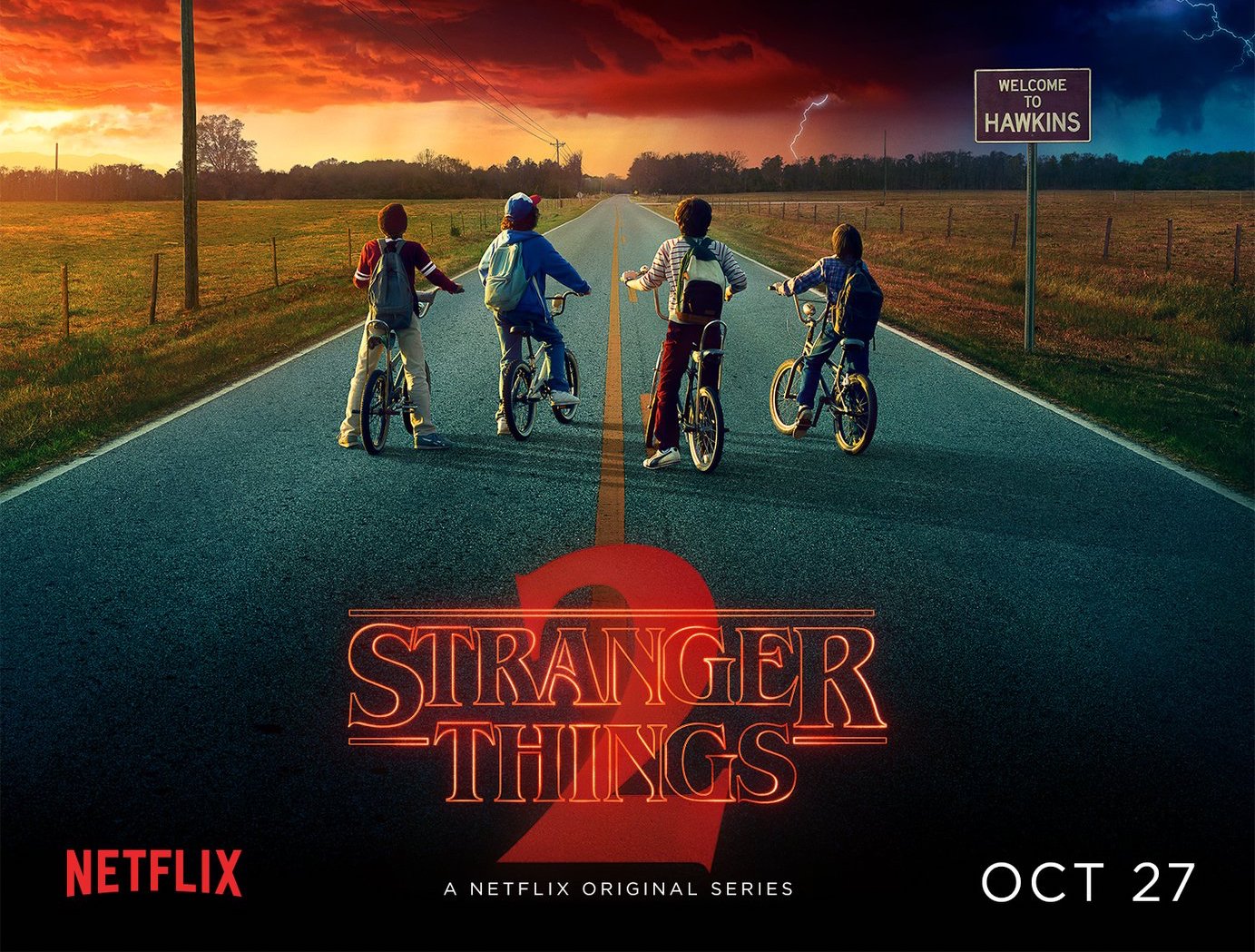
Darkness falls across the land… the midnight hour is close at hand…
When a TV show first debuts, its pilot episode has a lot of work to do.
For an audience to get hooked, any series’s very first episode must:
- Establish what “normal” is. (“Who is everyone, and how does this world work?”)
- Establish what each character wants, and the price for their needs / desires.
- Establish the stakes. (“If X achieves Y, then Z will happen. But if not…”)
Given how challenging this initial setup is, it’s safe to say that sequels have it easier, in theory.
Once the audience is already familiar with the characters, plot, pacing, tone, and the rules of how this narrative world works, sequel writers are free to build on what came before. But this hard-won fan familiarity also comes with a price for every successive season or sequel:
Now the audience has expectations that must be met.
So, in the particular case of Stranger Things 2 Episode 1, the writers had to:
- Re-establish what “the new normal” is. (“Where is everyone, and what’s different?”)
- Introduce new characters without eroding the screentime of fan favorites.
- Establish new desires for each character, and what stands in their way.
- Establish even higher stakes.
- Give the fans what they want (more of the same) while evolving the story.
For bonus points, they also had to structure the episode in a way that compels binge-watching, and they had to do it all in under 50 minutes.
Let’s look at how they nailed each one of these requirements.
What’s the New Normal?
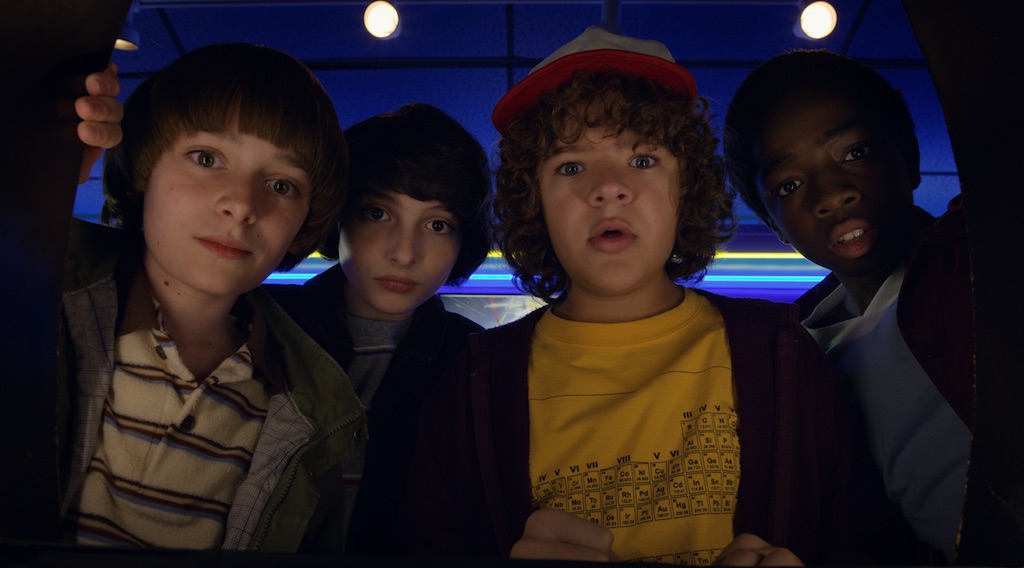
You know Dustin is going to memorize up-up-down-down-left-right-left-right-B-A-start in a few years.
Generally speaking, life in Hawkins, Indiana is mostly the same a year after the events of Stranger Things season one ended. To recap:
- Will, Mike, Dustin, and Lucas are still best friends in 8th grade
- Chief Hopper and his entire staff are still working in the police department
- Nancy is still dating Steve while Jonathan hovers in her periphery
- Eleven is still missing
- Barb is still presumed missing [but we know she’s dead]
However, there are some notable changes:
- Will sees terrifying visions of the Upside-Down whenever his PTSD is triggered
- Mike, once a model student, now frequently screws up (because he misses Eleven)
- Will’s mom Joyce is more put-together now that she’s in a new relationship
And, most notably, Hopper is spending a lot of time in a cabin in the woods, because… well, I won’t spoil the whole episode.
Meanwhile, little details like Nancy’s new hair, the Wheelers’ “Reagan/Bush ’84” election signs, and the Byers’s refurbished home tell us that time has passed and anchor us in a specific era: October 1984.
The biggest thematic change is the boys’ evolution from playing Dungeons & Dragons in Mike’s basement to playing video games at the arcade. I’ll touch on why this change matters at the very end of this post; for now, it’s a picture-perfect moment of the tweenage zeitgeist.
It’s important to note just how normal things are for our many protagonists one year later. Nearly every concern or behavior tic could be explained away as hormones or stress. For a town harboring a secret gateway to a horrifying alternate dimension, nothing seems all that unusual.
But that’s all about to change thanks to five new characters and one fucked-up pumpkin patch.
The lesson? Re-establishing what’s normal in the story naturally draws attention to what isn’t.
How Do the New Characters Affect the Story?
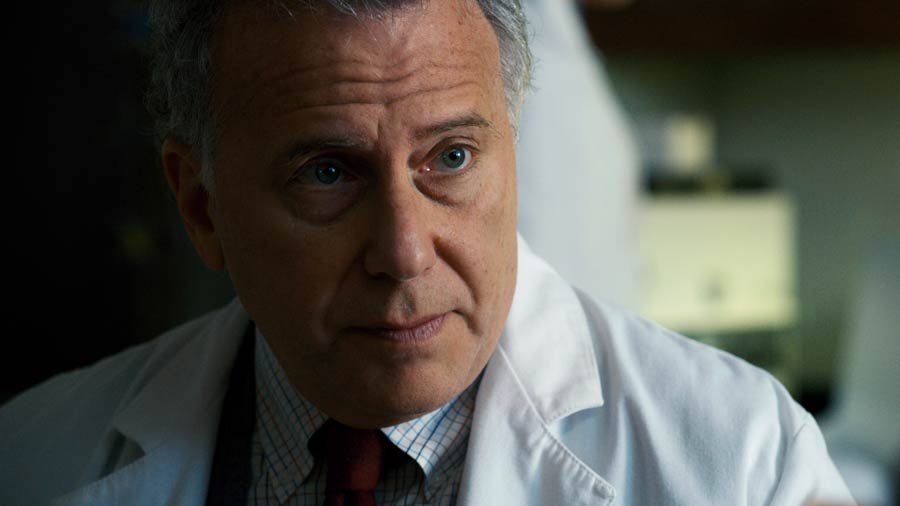
“Trust me, I’m a doctor. Also, I was married to Helen Hunt. But that’s another story.”
Okay, so here’s one of the rare places this episode wobbles slightly: it opens with a sequence that doesn’t directly tie in to anything else (yet).
The episode begins with bank robbers in Pittsburgh escaping from the cops thanks to the psychic powers of a young lady with a number “008” tattooed on her arm. If you recognize the similarity to Eleven’s “011” tattoo, you can predict where this is going… but it doesn’t loop back into the rest of the narrative. (I’ll come back to why it actually matters in a minute.)
We’re also introduced to five other new characters, each of whom has a direct impact on life in Hawkins:
- Murray Bauman is a private investigator hired by Barb’s parents to solve her disappearance
- “Bob the Brain” is a genial Radio Shack employee who’s dating Joyce
- Max and Billy are new students from California whose give-no-fucks attitudes turn heads
- Dr. Owens has taken over operation of the Hawkins National Laboratory, and he brings Will in for periodic check-ups ever since that whole Upside-Down incident
For a show that already had a sprawling cast, you could argue that Stranger Things 2 didn’t need to add even more characters. And if their addition was coming at the cost of seeing our favorite characters less, this would be a doubly bad idea.
Instead, the Duffer Brothers wisely solve this conundrum: each new character’s function serves the central plot and the central themes of the show. And because each of them creates a new problem for one of our returning favorites, we get to learn who these new characters are by defining them in opposition to the characters we already love.
For example, take Nancy and Steve.
When we’re reintroduced to them, they’re in the high school parking lot, sitting in Steve’s car. Nancy is trying to help Steve write a better college application essay, but Steve’s ready to give up. He laments that he’ll probably just end up running his dad’s business anyway, so what’s the point? Besides, if he stays local instead of going off to college, he can be here for Nancy’s senior year. Wouldn’t she want that?
Before she can answer, they’re both distracted by a muscle car loudly roaring into the lot. (It’s blasting “Rock You Like a Hurricane” by The Scorpions, because this show still loves its on-the-nose music cues.) In a sly homage to Stephen Spielberg’s most famous camera move, Nancy opens her door and leans on Steve’s car, staring transfixed at… Billy, the new bad boy transfer student whose ass catches every girl’s eye.
We don’t need any more dialogue to know that Nancy and Steve are going to have problems this season. Even if Nancy doesn’t fall specifically for Billy, this sequence establishes two themes: Nancy can’t bring herself to commit to Steve, and Billy is here to shake things up.
Oh, and did I mention that this same sequence also shows us Steve’s surprising vulnerability which proves he’s evolved since season one and it sets up Nancy and Steve’s plot-furthering dinner plans that evening, while also introducing the pivotal character of Max?
That’s the kind of efficient writing this episode is full of.
The lesson? To keep the pace moving, make sure each scene is doing the job of three — even when you’re introducing new information.
What Does Everyone Want?
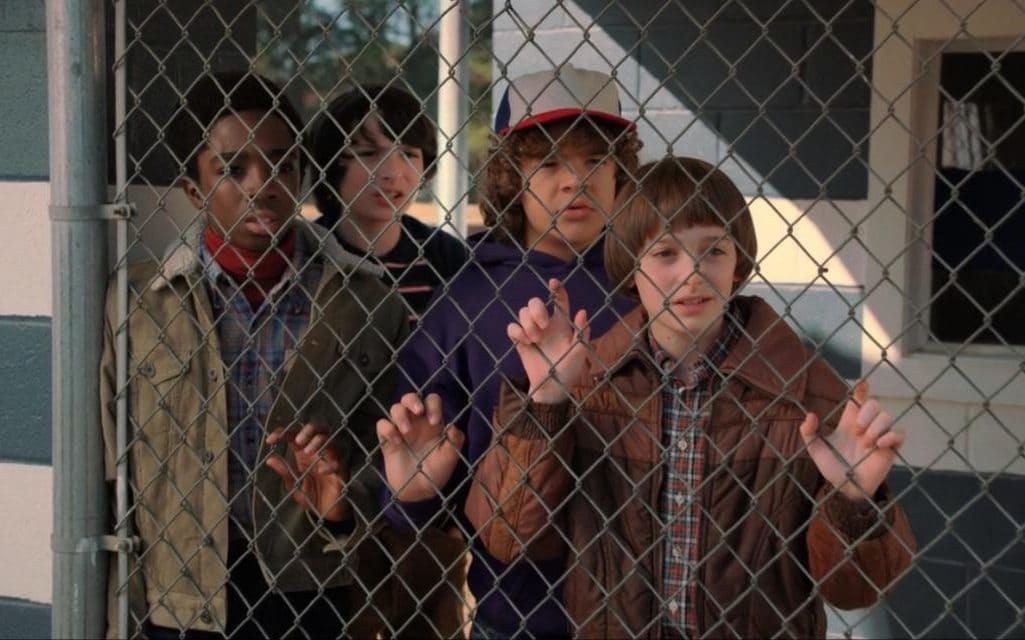
“I’m not trapped in here with you. You’re trapped in here with me!”
There are lots of moving pieces in any show. In a series with more than 20 recurring characters, keeping track of who wants what and how it affects everyone else can get tricky.
Here’s what every main character in Stranger Things 2 Episode 1 wants, in a nutshell:
- Will wants his disturbing visions to stop and/or to not be true; he wants to be normal again
- Mike wants Eleven to give him a sign that she still exists
- Dustin and Lucas want to be friends (or more) with Max, the cool new tomboy
- Joyce wants to protect Will and do what’s best for his mental health
- Bob wants to develop a healthy relationship with Joyce and her sons
- Jonathan wants to date Nancy, but she’s dating Steve
- Steve wants Nancy to say she loves him
- Nancy wants to find closure over her guilt about Barb’s death
- Barb’s parents want Murray to find their daughter
- Murray wants to get to the bottom of a wild conspiracy theory about Russia and aliens
- Hopper wants a few things:
- to get Murray off his back
- to get Dr. Owens to tell him and Joyce the truth about Will’s condition
- to let Joyce know he’s jealous of her and Bob
- to figure out what’s killing all the pumpkins in town
- to make sure no one ever goes into his shack in the woods
But what do Billy and Max want? We don’t know yet.
Can we trust Dr. Owens? We don’t know yet.
Are Will’s visions real? We don’t know yet.
What’s making that ungodly noise in Dustin’s trash can? We don’t know yet.
All these mini-mysteries are enough to keep us hooked.
The exception? Bob.
Instead of providing extrinsic conflict, Bob wants to help Joyce, Will, and Jonathan make their lives better. But, functionally, even a possible improvement is a disruption that will force the Byers family to redefine their relationships to each other, and to themselves.
When Hopper refers to him as “Bob the Brain,” or Joyce comments that she doesn’t understand the technological doohickeys that Bob sells, we learn about a new character through the reactions of existing characters. We also get a signal of what purpose we should expect this character to serve. In Bob’s case, he’ll likely be a supplier of the gadgets the kids will need to solve their problems. He’ll also serve as a “nice guy” counterpoint to Hopper’s gruff style and Joyce’s grifter ex-husband Lonnie.
Because Bob is a kind, cheesy, well-meaning dork — essentially the adult version of the kids at the center of the story — and because his arc (he wants to provide for Joyce and prove himself a worthy partner/stepdad) is based on making life better for our pre-existing characters, he also serves a crucial thematic purpose: Bob represents optimism and a happy ending.
Which, because Stranger Things 2 is a suspense thriller, means the audience naturally presumes Bob is in danger of becoming a casualty from day one.
The lesson? When nearly every character is torn between two seemingly bad choices that also impact other characters, you have drama that can last for days… or seasons.
Speaking of being in danger…
What Are the New Stakes?
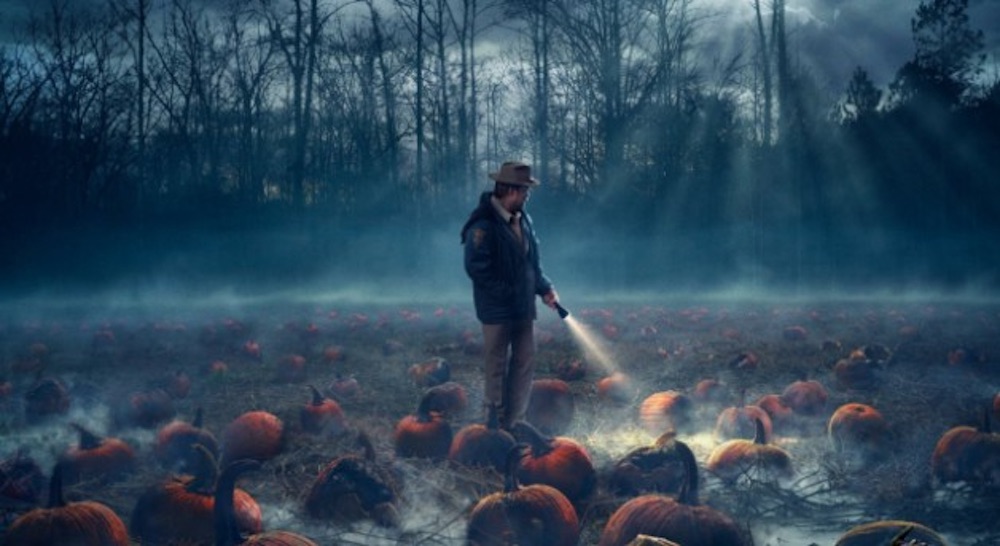
I don’t see how a pumpkin patch can be more sincere than this one.
Most plots are built from three types of interconnected conflict:
- External conflicts (people vs. outside circumstances) complicated by…
- Interpersonal conflicts (person vs. person) borne from…
- Internal conflicts (person vs. self) that must be overcome to solve all 3 problems
Stranger Things is no exception. In its first season, its plot concerned three intertwined mysteries:
- Where is Will, and what was he running from?
- Where is Barb, and what was hunting her?
- Who is Eleven, what is she capable of, who is chasing her, and why?
Complicating these external conflicts, we had multiple interpersonal dramas like:
- Mike trying to convince Dustin and Lucas to trust Eleven
- A love triangle between Jonathan, Nancy, and Steve
- Pretty much everyone thinking Joyce was crazy
And these interpersonal dramas were the result of internal conflicts, like:
- Joyce worrying that she’s not a good enough mother
- Hopper never finding closure after the death of his daughter
- Nancy feeling torn between how she’s expected to act and how she wants to act
In Stranger Things 2, the stakes are raised across the board. Just in the first episode, we know:
- Super-powered bank robbers are on the loose
- A mysterious source is rotting all the pumpkins in town
- The Hawkins lab is having power failures
- Will is seeing visions of a seeming apocalypse
Complicating these external conflicts, we now have even bigger interpersonal dramas, like:
- Dustin and Lucas’s interest in Max potentially ruining the boys’ inner circle
- A love quadrangle (?) between Jonathan, Nancy, Steve, and Billy
- The risk of Barb’s investigation implicating Nancy, Steve, and everyone else
- That secret in Hopper’s cabin
And these interpersonal dramas amplify internal conflicts, like:
- Will fearing that he’ll never be normal again
- Mike becoming isolated in Eleven’s absence
- Steve grasping for control over his own future
- Nancy feeling directly responsible for Barb’s death but not being able to tell anyone [because it could result in the Hawkins lab personnel taking them all away]
In other words, if season one of Stranger Things was about a small town trying to rescue a missing child by solving a supernatural mystery (a mostly local problem), then Stranger Things 2 is about that same small town trying to prevent a potential apocalypse (a much larger problem).
The lesson? In a serialized story, every old problem is the basis for a new complication.
But that’s just the plot. At its heart, Stranger Things 2 Episode 1 is really about a whole lot more.
How Has the Story Evolved?
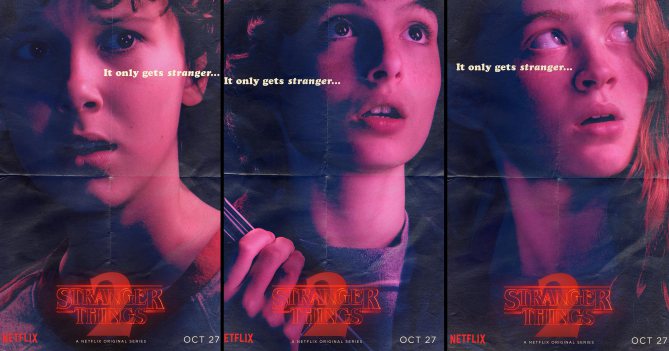
Vintage vibes.
Remember when I pointed out that the kids have graduated from playing D&D to playing video games?
Well, in some ways, that’s a regression.
Dungeons & Dragons is a game with rules, but the dungeon master (or storyteller) is free to create the story as s/he goes along, and the players are free to make any choice they can within the confines of the game’s structure. While there are limits, D&D is revered for being the original “open world” role-playing game.
But video games are much more restrictive than role-playing games.
They’re programmed by strangers, they limit your movements, and they require you to perform specific tasks in specific ways or else you pay the price.
This replacement of an open world game by a more clearly-defined and restrictive puzzle may be chronologically accurate, since Mike and the boys would definitely have been living in video arcades in 1984. But it also represents the evolution of Stranger Things into a new kind of show, where both its creators and its characters are trapped by their own choices.
You see this in Will, who may be “free” from the Upside-Down but he’s still trapped by visions of an evil that’s out to destroy the world.
You see this in Hopper, who made a noble gesture at the end of season one that’s now defining his life.
You see this in Billy, who represents rebellion against expected behavior, and Max, who represents rebellion against gender stereotypes (“Girls don’t play video games!”). It’s no wonder the townies of Hawkins are so drawn to these mysterious new personalities, who provide an escape from the norm.
Most of all, you see this in Nancy, who can’t commit to Steve because she sees what their future together looks like and she’s not sure she wants it… but she’s not sure what else she wants, either.
Worse, she’s trapped by her knowledge of how Barb died. That’s is a story she can’t confess to Barb’s parents without the Hawkins lab agents “disappearing” everyone who was involved, yet she’s also seeing them literally lose everything they own as they liquidate their assets to pay for a man to hunt down the truth.
The episode perfectly encapsulates Nancy’s feeling of creeping dread with a silent shot of her crying in Barb’s bathroom. Suburban towel racks and tile have never felt like such a prison. There’s no way this ends well, in any direction, for anyone.
Which brings us to the Duffer Brothers themselves.
Where Do We Go from Here?
Right now, Stranger Things is one of Netflix’s flagship shows. This surprising hit series the Duffer Brothers created — and the first series they’ve ever been the showrunners for — is now defining what binge-worthy TV looks like.
The problem is, now that the show’s world has been established, its characters have been defined, and its plot points have been set in motion, things can only escalate from here.
The looming apocalypse of season two will have to be topped in season three, and beyond. The love triangles will have to be expanded, or multiplied. (We already see this pending with Max disrupting the boys’ club and Hopper insisting Joyce should call him first if things go wrong.) The powers of Eleven will have to be magnified or mutated. (Again, this is where the bank robbers from the opening scene provide a thematic purpose: this is one path that could lay ahead for Eleven if she stops playing by other people’s rules.)
The Duffer Brothers have said they see Stranger Things lasting “four or five years.” By that time, other Netflix mainstays like House of Cards, Orange Is the New Black, and Narcos will likely have wrapped. If Stranger Things is getting a lot of attention now, imagine how much pressure it will be under to retain subscribers once Netflix’s other cash cows have retired. Beyond that, imagine the effect four seasons of Stranger Things will have on the TV landscape at large, as new series try to ape the binge-heavy formula that the Duffer Brothers keep refining.
I’m optimistic that the Duffer Brothers, like their characters, will keep finding new ways to escape the traps their story choices and audience expectations seem to back them into. They already passed the first test by revitalizing a known property with new blood for a second season that’s even better than the first. With Stranger Things 2 Episode 1, they’ve delivered the ideal blueprint for evolving a series without losing the magic that made it work.
If the series keeps improving at this pace, we’ll be in for some truly epic storytelling by the time Will, Mike, Dustin, and Lucas are old enough to drive.
And if the unthinkable happens? If the narrative wheels do fall off, or the story takes an irreparable turn that causes fans to abandon it in droves?
Demogorgons, shadow monsters, and the inevitable march of time aside, something tells me the kids are gonna be all right.
If You Liked This Post
… you may also like why audiences love Steve Harrington and why Black Sails has one of the best main characters in TV history.
Steve Harrington, Jaime Lannister, and the Real Secret to Writing a Redemptive Character Arc
Why Black Sails Has One of the Best Main Characters in TV History
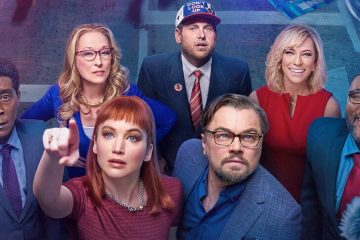

0 Comments